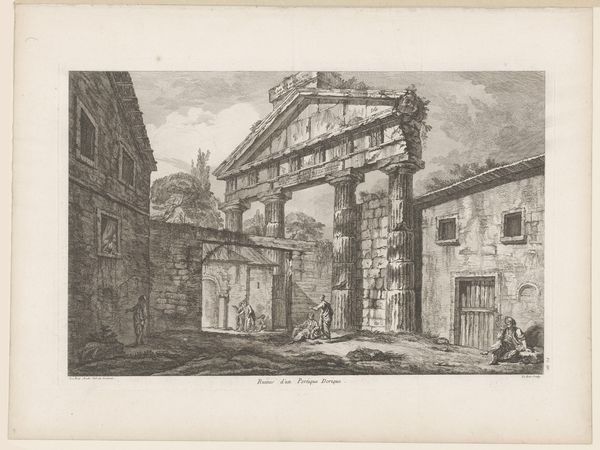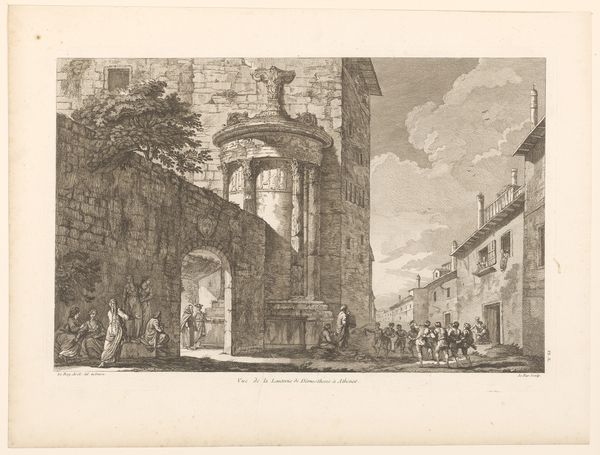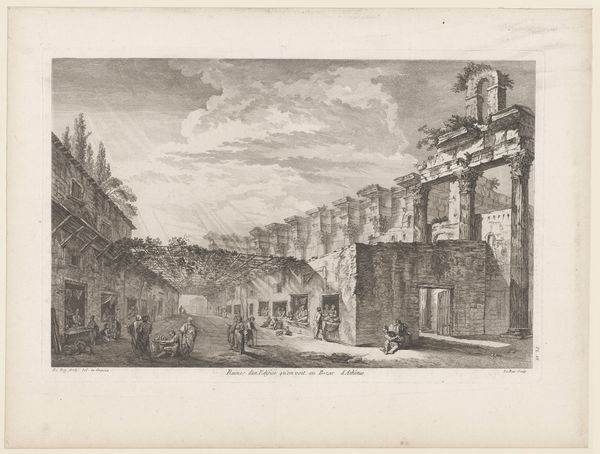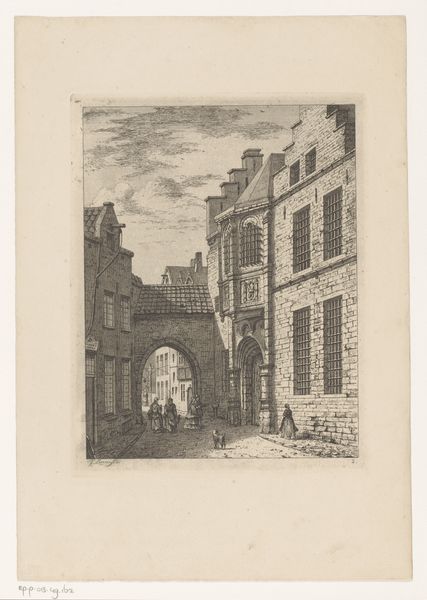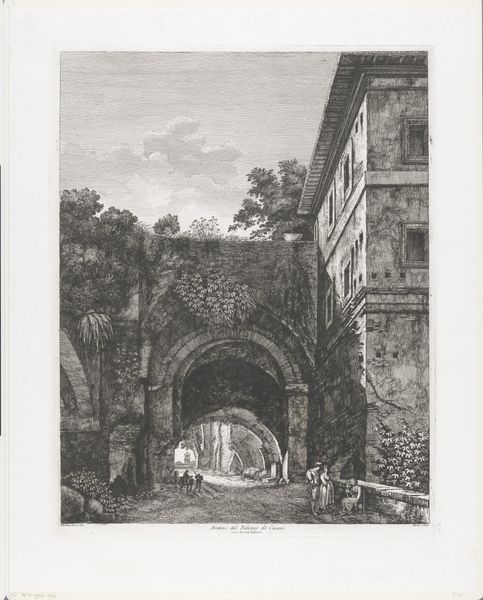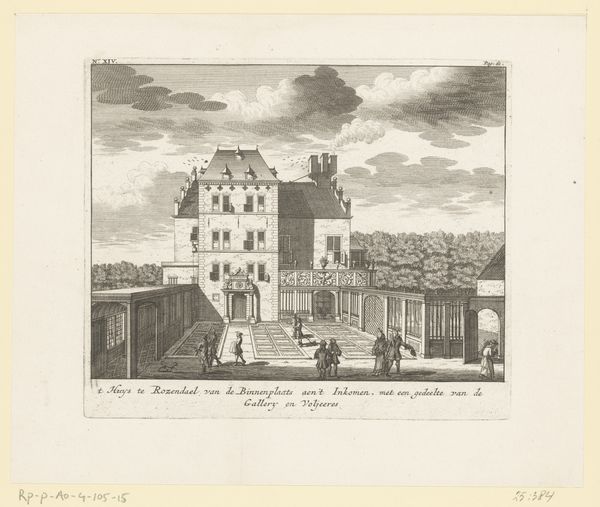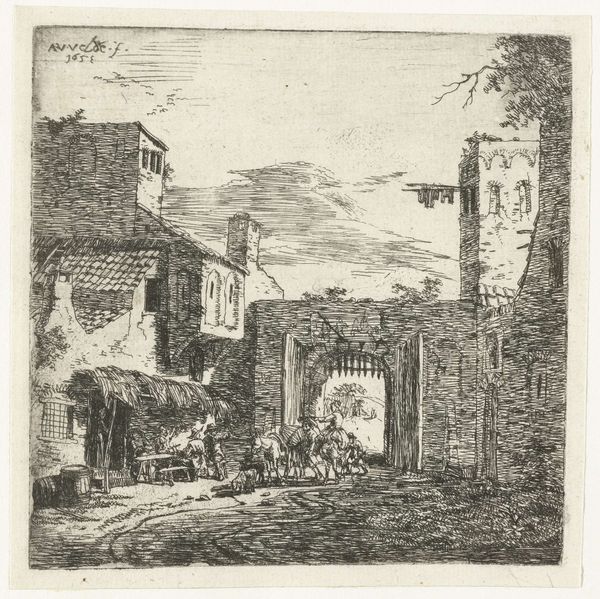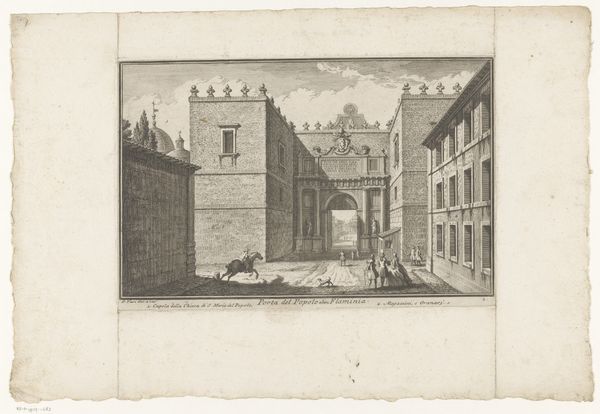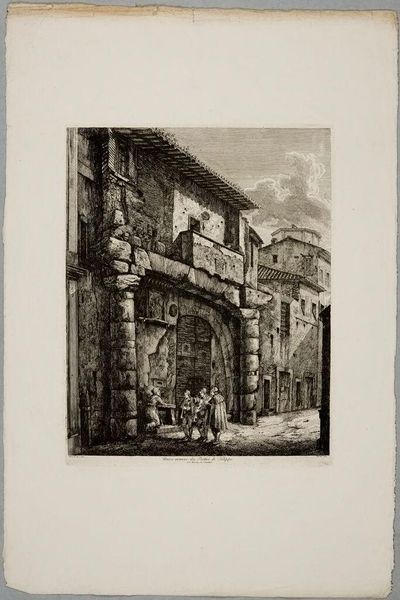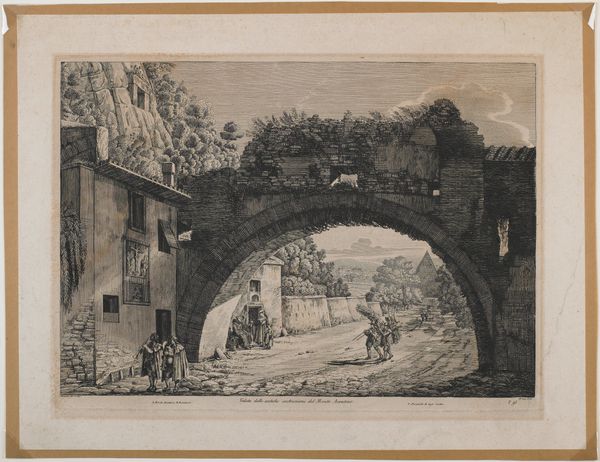
print, engraving, architecture
#
neoclacissism
# print
#
old engraving style
#
landscape
#
19th century
#
engraving
#
architecture
Dimensions: height 360 mm, width 453 mm
Copyright: Rijks Museum: Open Domain
Editor: Here we have Luigi Rossini's "Temple of Romulus in Rome," an engraving from 1819. It has a rather somber and imposing mood for what appears to be such a small temple, don’t you think? I'm curious – how do you interpret this work, especially in light of its historical context? Curator: It's precisely that contrast that interests me. The engraving, while depicting Neoclassical architecture, transcends mere aesthetic appreciation. Consider Rome in 1819: still grappling with the aftershocks of Napoleonic occupation and the re-establishment of papal authority. Rossini isn't simply showing us a temple. He’s showing us power, its endurance and its evolution. Editor: So, you see the architectural decay as symbolic? Curator: Absolutely. The ruins whisper stories of shifting power dynamics, of empires rising and falling. The temple, initially dedicated to Romulus, possibly later repurposed for Christian worship—note the cross atop the dome—becomes a palimpsest of societal change. Editor: I hadn't considered the layers of religious and political adaptation. How does that understanding affect our view of the figures in the foreground? Curator: The figures are critical. They stand as witnesses, perhaps even participants, in the ongoing drama of history. Their small stature emphasizes the grandeur and the weight of the past, inviting viewers to consider their place within that continuum. Is it admiration they express, or something more critical? Editor: This makes me see the print in an entirely new way. The interplay of decay and adaptation becomes a powerful statement about the resilience – but also the mutability – of power. Curator: Precisely. It’s about understanding how architectural spaces are not politically neutral; they are encoded with social meaning that speaks across time. A ruin is not simply a picturesque fragment but a reminder of contestation and adaptation, isn't it? Editor: Definitely, thank you, I'll think about this longer.
Comments
No comments
Be the first to comment and join the conversation on the ultimate creative platform.
